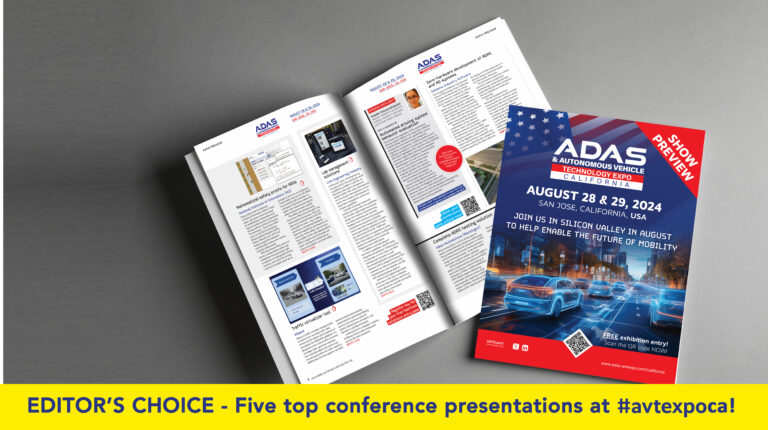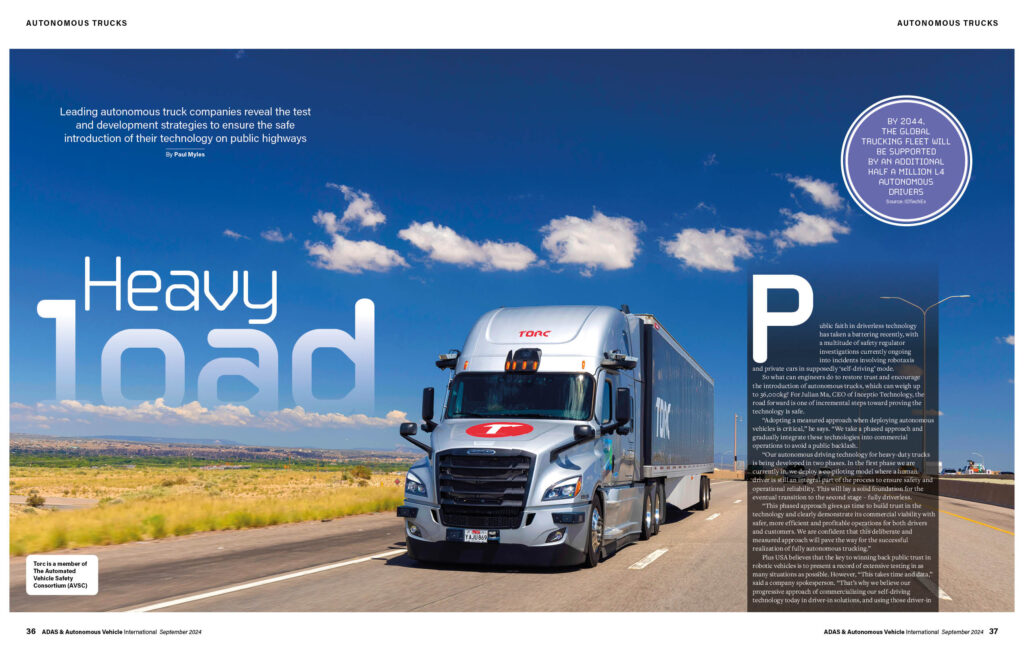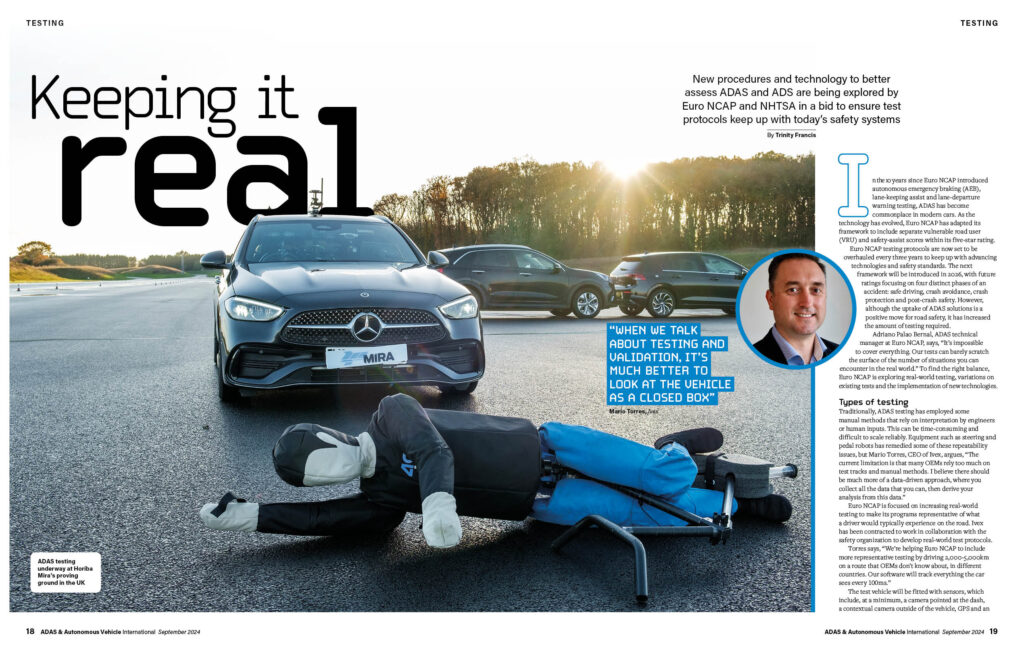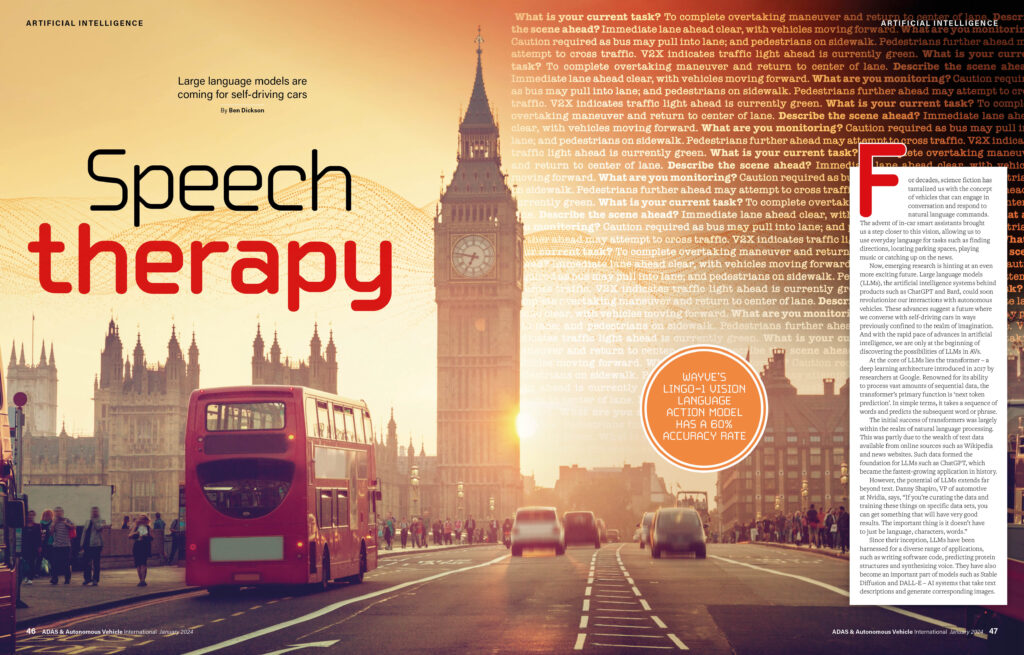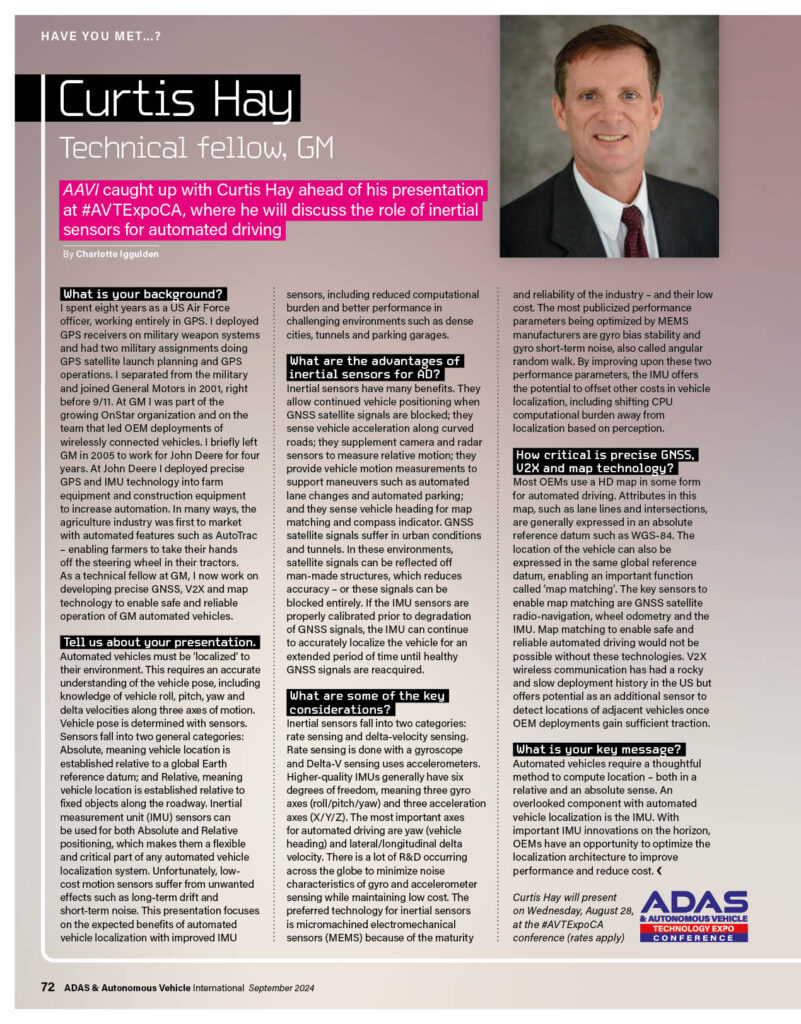With the start of ADAS & Autonomous Vehicle Technology Expo California at the McEnery Convention Center, San Jose, now just weeks away (August 28 & 29, 2024), AAVI shares some of the presentations it is most looking forward to at this year’s conference (rates apply). It’s not too late to reserve your place, with a 5% discount available to readers of AAVI! (Just enter the discount code ‘AAVi5’ when you register!)
Transitioning from research to production-level autonomous vehicle testing
 Torc has a rich, diverse history in the autonomous vehicle space dating back to 2005. Since becoming an independent subsidiary of Daimler in 2019, Torc has become laser-focused on delivering an autonomous long-haul trucking solution. Torc’s team of highly trained test crew (in-vehicle fallback test drivers and safety conductor) are an important part of its research and development testing to help ensure safety. The research testing has evolved into a rigorous development lifecycle process. As we progress toward driverless operations, a cohesive cross-platform SIL/HIL/VIL testing strategy which includes best practices and standards will need to be employed. Don’t mis Evan Smith, engineering manager for vehicle testing, explain Torc’s testing journey so far, including specific examples from its test program and its plans for future deployment. Evan recently spoke to AAVI as part of an exclusive feature exploring the testing strategies currently employed by leading autonomous trucking firms.
Torc has a rich, diverse history in the autonomous vehicle space dating back to 2005. Since becoming an independent subsidiary of Daimler in 2019, Torc has become laser-focused on delivering an autonomous long-haul trucking solution. Torc’s team of highly trained test crew (in-vehicle fallback test drivers and safety conductor) are an important part of its research and development testing to help ensure safety. The research testing has evolved into a rigorous development lifecycle process. As we progress toward driverless operations, a cohesive cross-platform SIL/HIL/VIL testing strategy which includes best practices and standards will need to be employed. Don’t mis Evan Smith, engineering manager for vehicle testing, explain Torc’s testing journey so far, including specific examples from its test program and its plans for future deployment. Evan recently spoke to AAVI as part of an exclusive feature exploring the testing strategies currently employed by leading autonomous trucking firms.
Applying modern AI to advanced autonomous driving
 As VP of R&D at Plus, Dr Anurag Ganguli defines and implements the product roadmap and development milestones of the company’s Level 4 autonomous driving technology. At this year’s conference in San Jose, Ganguli will dive into the application of the latest AI models in developing autonomous driving technology, discuss the transformative impacts of modern AI in building more robust and adaptive AD systems, and share Plus’s real-world commercialization experience across the US, Europe and Australia. You can read an extensive interview with Ganguli on PlusVision, a new deep neural network-based AI perception software for autonomous vehicles, in the latest issue of AAVI.
As VP of R&D at Plus, Dr Anurag Ganguli defines and implements the product roadmap and development milestones of the company’s Level 4 autonomous driving technology. At this year’s conference in San Jose, Ganguli will dive into the application of the latest AI models in developing autonomous driving technology, discuss the transformative impacts of modern AI in building more robust and adaptive AD systems, and share Plus’s real-world commercialization experience across the US, Europe and Australia. You can read an extensive interview with Ganguli on PlusVision, a new deep neural network-based AI perception software for autonomous vehicles, in the latest issue of AAVI.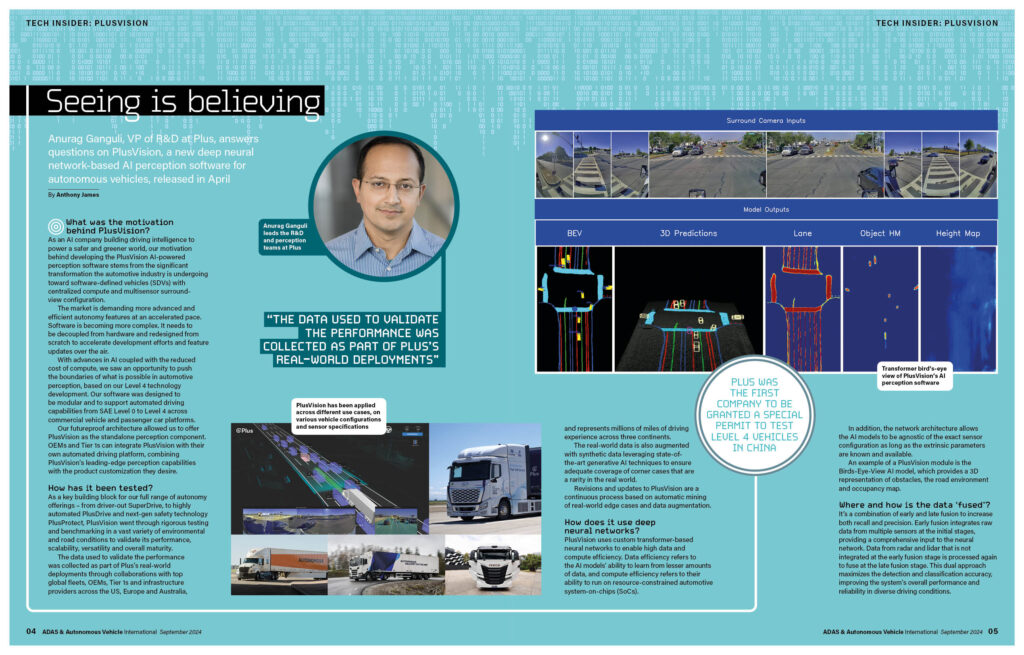
Test and deployment of autonomous vehicles in California – a regulatory update
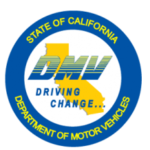 Don’t miss Dr Bernard Soriano, deputy director of the California Department of Motor Vehicles, present on Day 1 (August 28), when he will share all the latest insights from one of the world’s leading testbeds for autonomous driving development. California is the birthplace and epicenter of autonomous vehicles and remains at the heart of AV testing. In what has been an eventful year, it’s more important than ever to keep up to date with regulatory developments, and engineers wishing to test their technologies on California’s streets should not miss this presentation. You can read more about the latest NHTSA and Euro NCAP ADAS and ADS testing mandates and procedures in an exclusive feature in the latest issue of AAVI.
Don’t miss Dr Bernard Soriano, deputy director of the California Department of Motor Vehicles, present on Day 1 (August 28), when he will share all the latest insights from one of the world’s leading testbeds for autonomous driving development. California is the birthplace and epicenter of autonomous vehicles and remains at the heart of AV testing. In what has been an eventful year, it’s more important than ever to keep up to date with regulatory developments, and engineers wishing to test their technologies on California’s streets should not miss this presentation. You can read more about the latest NHTSA and Euro NCAP ADAS and ADS testing mandates and procedures in an exclusive feature in the latest issue of AAVI.
Developing and deploying self-driving technology safely
 After two decades and billions of dollars being poured into self-driving, access to this technology remains limited to a few locations. Before we can realize the tremendous personal and societal value that driving assistance and automation promise to deliver, we must design a system that can safely and verifiably handle the persistent long tail of real-world driving scenarios. Traditional systems have failed to tackle the long tail of driving scenarios using brittle and time-consuming rules-based programming. Join Wayve’s director of embodied AI, Sean Harris, at this year’s conference, where he will share how the UK company is pioneering a new approach using end-to-end embodied AI. Harris will explain how Wayve’s end-to-end embodied AI provides a solution to effectively handle complex, real-world driving situations. You can read more about Wayve’s use of generative AI and large language models to help speed AV development in an exclusive feature first published in the January 2024 issue of AAVI.
After two decades and billions of dollars being poured into self-driving, access to this technology remains limited to a few locations. Before we can realize the tremendous personal and societal value that driving assistance and automation promise to deliver, we must design a system that can safely and verifiably handle the persistent long tail of real-world driving scenarios. Traditional systems have failed to tackle the long tail of driving scenarios using brittle and time-consuming rules-based programming. Join Wayve’s director of embodied AI, Sean Harris, at this year’s conference, where he will share how the UK company is pioneering a new approach using end-to-end embodied AI. Harris will explain how Wayve’s end-to-end embodied AI provides a solution to effectively handle complex, real-world driving situations. You can read more about Wayve’s use of generative AI and large language models to help speed AV development in an exclusive feature first published in the January 2024 issue of AAVI.
The role of inertial sensors for automated driving
 In addition to perception sensors such as cameras, lidar and radar, accurate vehicle localization requires intelligent use of ‘absolute’ sensors such as GNSS, inertial measurements and a high-definition map. In this presentation on Day 1 (August 28) from GM technical fellow, Curtis Hay, delegates will discover the key requirements and design trade-offs for inertial sensors, and how these sensors contribute to automation in challenging environments. Hay currently develops precise GNSS, V2X and map technology to enable safe and reliable operation of GM automated vehicles, and you can read an exclusive interview with Hay in the latest issue of AAVI!
In addition to perception sensors such as cameras, lidar and radar, accurate vehicle localization requires intelligent use of ‘absolute’ sensors such as GNSS, inertial measurements and a high-definition map. In this presentation on Day 1 (August 28) from GM technical fellow, Curtis Hay, delegates will discover the key requirements and design trade-offs for inertial sensors, and how these sensors contribute to automation in challenging environments. Hay currently develops precise GNSS, V2X and map technology to enable safe and reliable operation of GM automated vehicles, and you can read an exclusive interview with Hay in the latest issue of AAVI!
Overall, the two-day conference features 50+ speakers, with industry experts and pioneers from organizations including Waymo, Volvo Cars, DiDi, Kodiak Robotics, ASAM, Qualcomm, and the Automated Vehicle Safety Consortium (AVSC). See the full program and speaker list and register for your conference pass (rates apply) now, to secure your place.


